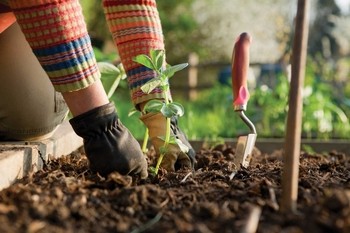
Gardening in containers is advantageous because it saves space. It is also the most effective alternative when you have difficult climate, limited mobility, too little time, poor soil or too much shade. Compared to regular gardens, a container garden is more productive because, among other things, it helps you avoid diseases and pests.
Perhaps the best benefit of container gardening is that by bringing the garden up close, it offers a sense of intimacy that may not be possible with regular gardens.
You can grow just about anything in planters. In addition to pressed fiber, plastic or terra cotta pots, you can also do your gardening using wooden planter boxes, plastic tubs, bushel baskets, 5-gallon food buckets and whiskey barrels. However, for the best results, you want to use a self-watering planter, which features in-built reservoirs for water.
Sizes of planters
The plants you plan to grow will determine the size of the containers you use for gardening. For example, while radishes may do fine in a container that is 6 inches deep, it would not be a good idea to grow tomatoes in planters that cannot hold at least 5 gallons of soil.
Generally, for tomatoes, your safest bet is using the largest container possible in order to give your plants adequate space for roots, which in turn means that your plants can go longer without watering.
It is imperative that your planters have correctly sized holes for drainage. If possible, the holes should not be on the bottom but on the sides. This ensures that your plants’ roots don’t get waterlogged by excess water. If you use large planters with holes at the bottom, make sure they are elevated on wood scraps or bricks in order for the water to escape.
Generally, there should be four to six three-quarter-inch drainage holes in a 20-gallon planter, and at least eight one-inch drainage holes in a 30-gallon planter. You can place pieces of crockery or stones. This is however not required if you use well-aerated soil. In fact, the stones may only take up valuable space.
Soil mixture
After selecting the right container, the next step is choosing the right soil mix. If you’re a beginner, it may be easier to buy a pre-mixed blend that is formulated for planters that suck up moisture from an in-built reservoir. Alternatively, you can create your own mixes after consulting the right recipes.
The soil used for container gardening is moisture retentive, well-drained, friable and light. Regular garden soil is too dense and is susceptible to issues such as insects and disease. In fact, most plants grown in containers best thrive in a soilless blend that contains perlite/vermiculate, sphagnum moss and finished compost.
Whether you use an organic, standard or light blend soil mix, it will become compacted over time. If you use heavy and water-logged containers, your soil mix will need replacement at the beginning of every new season. Alternatively, you could replenish the depleted soil using Container Booster Mix.
Bio:
Troy S. Jenks is a vegetable container gardening enthusiast. He has developed his skills for over 13 years and has written numerous articles and blog posts on topics related to container gardening, including using a self-watering planter versus using a regular planter.

